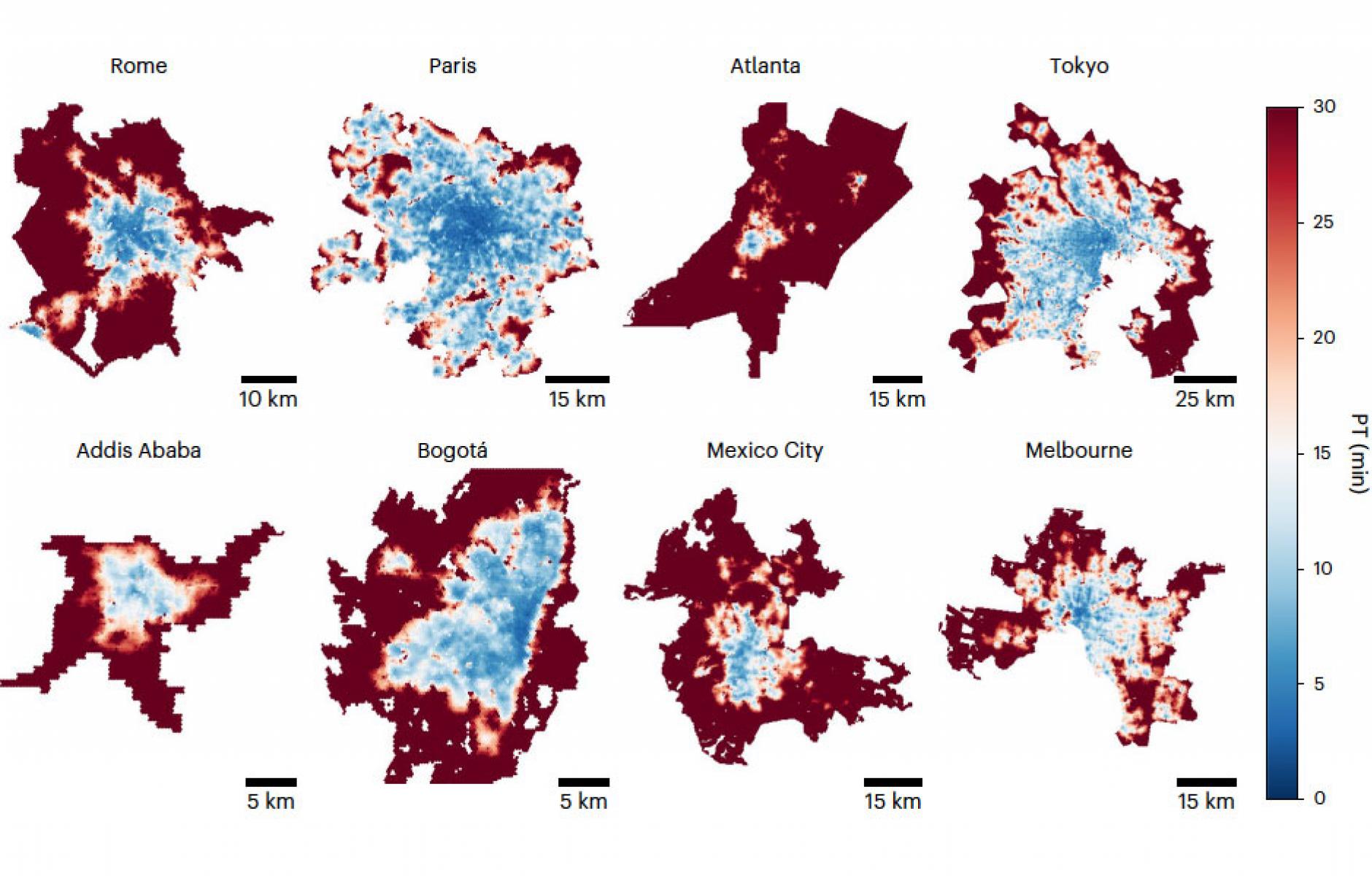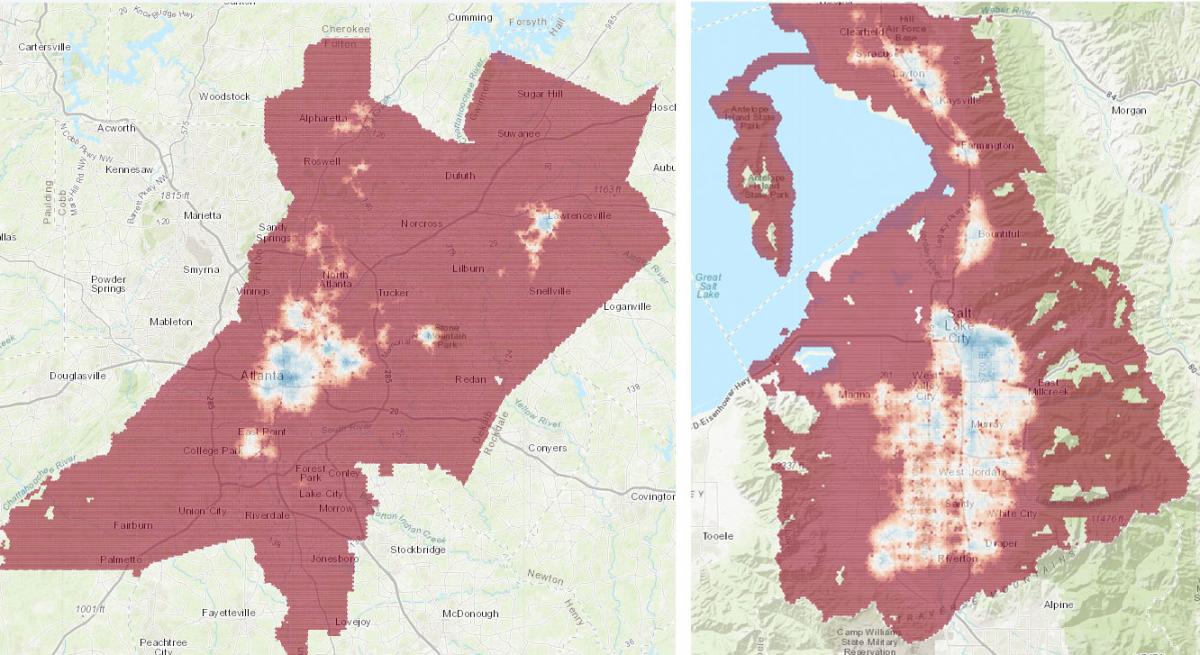
Measuring 15-minute city access and inequality
European cities are closer to the 15-minute city ideal than their counterparts in the US and many other parts of the world, according to a massive study released by Nature Cities journal.
Researchers at Sony Computer Science Laboratories created a database of 10,000 cities and measured the access on foot and bicycle to "points of interest" or POI, which include shops, restaurants, schools, parks, cultural amenities, workplaces, and pretty much everything that people need in their daily and weekly lives.
A Universal Framework for Inclusive 15-minute Cities came to conclusions that are mostly unsurprising to urban planners. "Our analysis consistently highlights patterns where city centers have better access to services than peripheral areas. However, notable exceptions exist, such as Paris or Barcelona, whose recent policies on increasing local access to services are well known. These cities exhibit a more evenly distributed accessibility, transcending the typical center–periphery divide," the Italian research team explains.
"A lot of people already live in a 15-minute city," says study co-author Hygor Piaget Monteiro Melo. The problem is unequal access to services between city centers and suburbs, he explains.
US cities were defined by metropolitan area, meaning core and satellite cities often demonstrate good 15-minute access, while the vast suburban hinterlands typically perform poorly. As a whole, US cities performed well below every European city—but not far different from Asian, African, and South/Central American cities.

What is the solution? The intuitive response would be to improve walkability, bike-ability, and general access in poorly performing areas. Instead, the team took the opposite approach. To equalize access, they created a “relocation algorithm” to visualize redistributing POIs around a city. In other words, they imagined moving the mixed-use elements, parks, services, institutions, and the like to new locations to make a city more equal.
“We concluded that relocating existing POIs (that is, without deploying new ones) would achieve the objective of substantially improving the proximity of peripheral and underserved areas while not impoverishing the central, already well-served, areas. This result advocates for more decentralization policies of the cities’ activities, favoring populated peripheral areas.”
The researchers say US cities need this a lot, but even if one could move buildings, parks, and infrastructure like in a game of SimCity, US metro areas are usually divided by many separate governments, making that game even more impractical. This seems like a great project for computer nerds, but one that is not very practical in real life.
Nevertheless, the online database is fun to explore. Most major US metro areas are included, and you can view them as a whole or zoom in on particular parts. You can also look at walking and bicycle access separately and proximity to different points of interest.
Even though US regions tend to perform poorly, you may notice interesting patterns. Check out, for example, the difference between Atlanta and Salt Lake City. The latter has invested far more in regional transit since 2000. A real difference is evident in 15-minute access.





